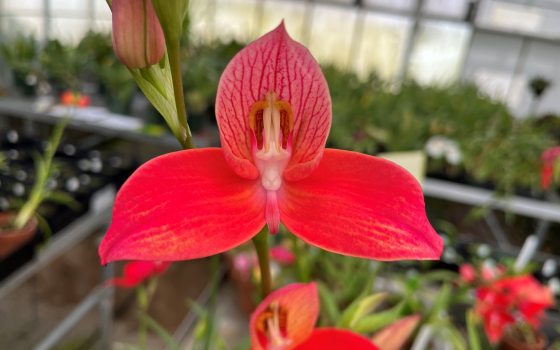The story of Disa cultivation at Longwood begins with the magnificent Disa uniflora, when our then director, Dr. Russell J. Seibert, traveled to South Africa for the Golden Jubilee of Kirstenbosch Gardens, in 1963. By that time and for many years after that, Kirstenbosch would house one of the premier Disa collections in the world, showcasing especially the seven evergreen species of this orchid genus of about 200 species from South Africa. Seibert returned from South Africa with about a dozen small plants of Disa uniflora, and a few years after they arrived, Disa uniflora flowered here at Longwood—marking the very first time an institution in the United States was able to successfully flower this species. With this success, in May 1969 our guests were able to revel in Disa uniflora on display, and our orchid growers have been growing and displaying Disa species and hybrids ever since. Longwood is one of a small number of public gardens around the world who breed and display this genus, and we have recently met a major Disa milestone that adds an entirely new dimension to our Disa history and our breeding program—and may increase the ease with which Disa can be grown at home.
Since we began growing Disa at Longwood almost 60 years ago, we’ve specialized in the hybrids of the seven evergreen species: Disa uniflora, D. racemosa, D. tripetaloides, D. cardinalis, D. aurata, D. caulescens, and D. venosa, all from streambank and small waterfall environments throughout specific areas of South Africa. While these streamside species are among the most readily cultivated and hybridized of all Disa, they can be tricky to cultivate and keep alive, if you don’t have the right information. Throughout the decades, we’ve learned a great deal about cultivating these streamside species, and this ever-growing knowledge has recently served as a springboard in more complex Disa hybridization. In the last year we have proudly registered our first three new Disa hybrids, marking not only a major milestone in our breeding program, but also serving as a giant step forward in the ability to create Disa hybrids that are within reach of the average home orchid grower. Read on for more on our new hybrids and how you can grow your own beautiful streamside Disa at home.
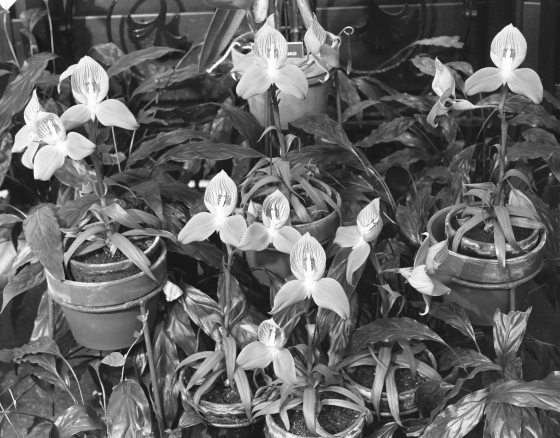
Disa uniflora flower in the bronze cases of the orchid display in 1967. Photo by Gottlieb Hampfler
Even though we had been growing Disa at Longwood for some 60 years, when I started as Longwood’s orchid grower in 2015 most of the plants had been remakes of the same crosses and line-breeding of Disa uniflora, and no new hybrids had been made. In my first few years at Longwood, we continued to remake earlier hybrids, but also tried to take the breeding lines that were already in the collection farther, remaking more complex hybrids. When our Associate Director of Conservation, Plant Breeding, and Collections Dr. Peter Zale, gave us Disa Diores ‘Inca Princess’ and Disa Kewdior in 2017, we were able to remake some hybrids that had never been at Longwood before, and these paved the way for our future hybridization. In 2021, we registered our first three new hybrids, a major success in our breeding program. By the time we registered Disa Longwood Renaissance Horizon (Sea Lord × Kewdior), Disa Longwood Dawning Ever New (D. uniflora × Sandra Parkinson), and Disa Longwood Advancing Excellence (Betty’s Bay × Sandra Parkinson), a few objectives had become clear.
First, Disa can be tricky to cultivate and keep alive, even in great conditions. We needed to breed plants that would grow better and return year after year more reliably. Through careful selection of breeding parents, this could be improved. But even more luckily, we stumbled upon another answer to this problem in Disa Suzette James. This hybrid creates many secondary growths at the base of the plant, which don’t go dormant the first year, and mature in the second year, which guarantee the survival of the plant from one year to the next. They also help the plant to grow large and floriferous quite quickly! One of my goals is to integrate this trait into all of our hybrids, so that growers can be more successful in the cultivation of Disa.
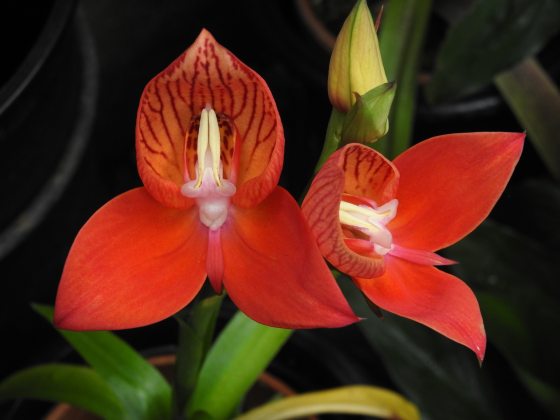
Disa uniflora. Photo by Candie Ward.
Second, it seemed that all of the hybrids were generally the same colors: red, orange, pink, or rarely yellow. Were these the only colors that these seven species could create? I doubted it, and as we continued to breed on, we began to see something exciting happening in our hybrids. Here and there were traces of yellow splashes or ‘lightning’ at the edges of the sepals, or sometimes subtle gradients of sunset tones would peek through. We began to breed specifically to bring out those colors and patterns, and some of them are apparent in our first new hybrids.
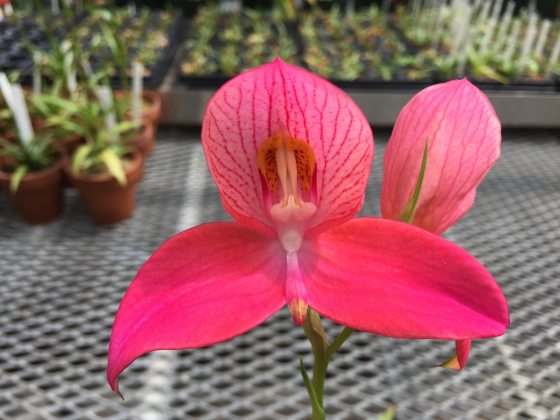
Disa Longwood Renaissance Horizon (Sea Lord x Kewdior). Photo by Greg Griffis.
These new hybrids are only the beginning! Disa Longwood Renaissance Horizon (Sea Lord x Kewdior) is showing the beginnings of sunset tones, and a few have splashes of yellow on the sepals too. They also grow lots of basal growths, making them multiply quickly and securing their survival from one season to the next. The name signifies the rising of a new age of orchid hybridization at Longwood, especially in the Disa collection.

Disa Longwood Dawning Ever New (D. uniflora × Sandra Parkinson). Photo by Greg Griffis.
Disa Longwood Dawning Ever New (D. uniflora x Sandra Parkinson) is a line that utilizes the continual habit of backcrossing Disa uniflora into each successive generation, which should help improve flower shape and size. In this case we had some very high quality and unusual Sandra Parkinson flower, and used those especially nice plants in this cross. The name of the hybrid represents the character of Longwood, continuing to innovate while always revering and honoring our legacy; the dawn comes every day, yet each day is new.

Disa Longwood Advancing Excellence (Betty’s Bay × Sandra Parkinson). Photo by Greg Griffis.
Disa Longwood Advancing Excellence (Betty’s Bay x Sandra Parkinson) is the start of a line of backcrossing to Disa Betty’s Bay, a hybrid that has been prominent in our collection for a long time. With some of our remakes of Betty’s Bay, new color forms have appeared, which will allow us to create different results by reintroducing it to this breeding line over time. The name signifies the onward march of excellence in this cross in standard breeding lines.
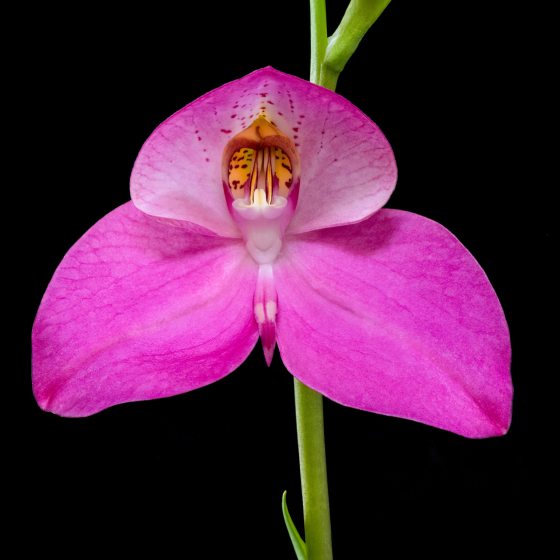
This Disa Veitchii ‘Paul’ AM/AOS will play a prominent role in remaking older hybrids. Photo by Duane Erdmann.
Growing these Disa can seem daunting, given their cultural requirements, and many people have failed when they haven’t had all of the right information. But, when you figure out how to grow them, they are certainly rewarding! The most important factor in cultivating these Disa is the temperature of the roots, not just the air temperature. The roots like to stay cool; around 50-70 F is ideal. The air temperature can fluctuate above that and into the 80s without any problem. One way to help keep the roots cool is to grow them in terra cotta pots, which wick moisture away from the medium, creating an evaporative cooling effect. Others have created elaborate ebb-and-flow or flow table systems with cooling systems chilling the water that circulates around the pots. Certainly you don’t have to go to this extreme in a home environment, and, if you have a room that remains in the 70s during the hottest parts of the year, that may be adequate cooling, combined perhaps with a terra cotta pot and good access to water.
This leads us to watering, as the streamside Disa cannot be allowed to dry. Most growers sit them in a saucer of water, or use an ebb-and-flow, flood, or flow table to keep constant access to moisture possible. The most important advice about watering is not to water from above, but to always water from below. This helps to keep water out of the basal leaf axils, where opportunistic rots can easily kill your plant. Air movement is also important, and a steady, gentle breeze is important for maintaining good culture. Light should be bright, a good east or west window will work great, and a south window will work too if you can keep the temperature low! In nature these species can grow in full sun, but remember that in nature their roots are kept cool by water flowing from mountain springs. If you are growing under lights or in a greenhouse, light levels should be at least 2000 foot-candles, but obviously can increase from there. The best medium is usually sphagnum moss, as it retains moisture well, although Disa have been grown in dozens of different mediums.
At Longwood we grow our Disa in an air-conditioned greenhouse, which stays around 72-75 F as a high, year-round. In the winter it goes down to 50 F as a low. We have 75 percent shade cloth on the greenhouse, which means the plants receive about 2000-2500 footcandles at the peak of the summer day. They are watered from underneath by means of a manually operated flood table. Air movement is generous, as the two six-fan air-conditioning units and four horizontal air flow fans run continuously. Our mature plants are grown in 4-inch clay pots in straight sphagnum moss, and are repotted annually.
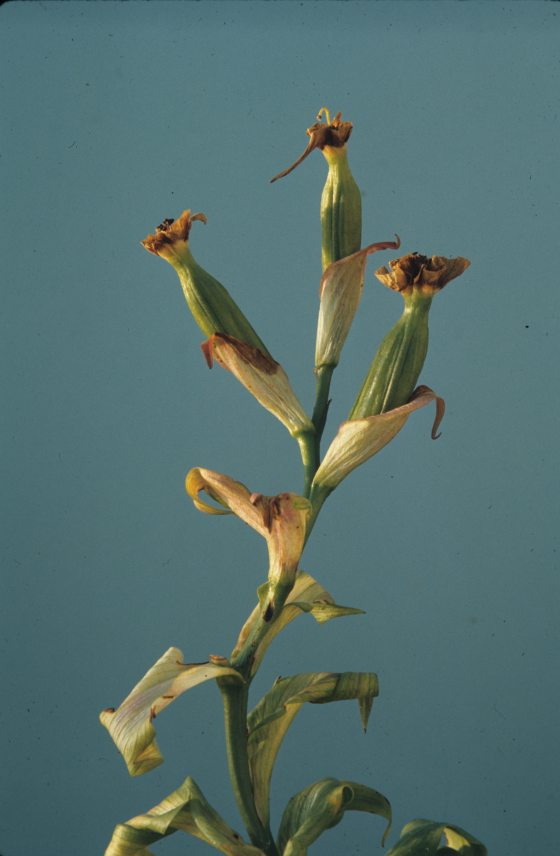
Disa uniflora seedpods maturing in the 1960s. Disa seedpods tend to mature in 4 to 6 weeks. Photo by Gottlieb Hampfler.
Most orchids cannot be grown from seed without a laboratory because they do not possess an endosperm (food storage for the embryo), but Disa seeds do have a residual endosperm. This means that they can be grown from seed in the home or greenhouse by sowing them on wet sphagnum moss. These Disa typically grow from seed to first flower in three years. The ease of seed germination for streamside Disa opens up incredible possibilities. Anyone who can learn to grow these Disa well can become a hybridizer, and raise up their own seedlings at home. Our method of sowing seed, which we’ve been using at Longwood, for almost six decades, is as follows:
- Fill a 4-inch (10 cm) pot with regular sphagnum moss and tamp it as flat as possible, with the surface about 1.5 cm below the rim of the pot.
- Wet that moss thoroughly and tamp flat again.
- Grind some sphagnum up through a strainer to create fine granulated moss particles.
- Pour the fine moss on top of the pot, creating a layer about 0.6 cm deep.
- Gently water over the surface of the pot; the fine moss should have filled in any bumpy parts of the regular moss and created a nice flat surface.
- Gently sprinkle the seed on the moss and set the pot in a tray with some water in it. We change the water once a week and begin to add very small amounts of fertilizer to the water once the seedlings are growing.
- Once the seedlings are about 1 cm in diameter we plant them out into a community pot to give the biggest seedlings room to grow.
- From there they are potted out into individual plugs once their leaf span is about 3–4 cm, usually about six months later.
The Disa program at Longwood is growing and evolving, and we can expect more exciting outcomes in the future; stay tuned as we discover and unlock the incredible potential of these beautiful orchids—and be sure to see our Disa while in bloom through mid-July!
